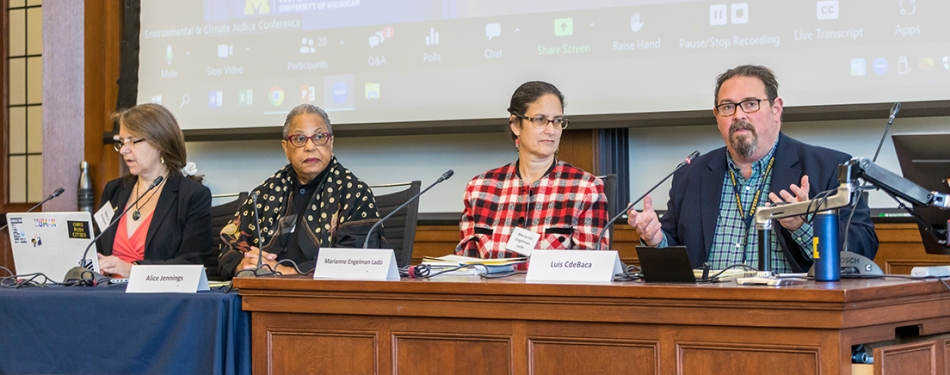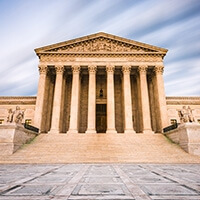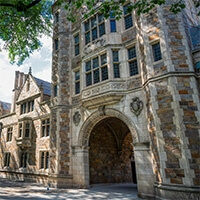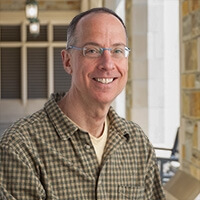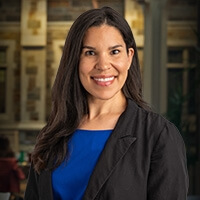Michigan Law’s Environmental Law and Policy Program recently hosted Environmental and Climate Justice, a two-day conference that brought together scholars and practitioners from a variety of disciplines and sectors to discuss how policies about pollution, natural resources management, and climate change disproportionately impact communities of color and low-income communities.
“Environmental hazards are placed too close to communities of color; environmental benefits like parks are placed too far from those same communities,” noted Oday Salim, an adjunct clinical assistant professor of law and director of the Environmental Law and Sustainability Clinic, in his opening remarks.
“The modern American environmental justice movement was born, if not very much defined, when a rural Black community in Warren County, North Carolina, pushed back [against plans to host a hazardous waste landfill],” Salim continued. “Our goal is that everyone who attends this conference walks away with a better idea of what tools [to fight for environmental justice] are available and how to wield them appropriately.”
Four takeaways from the conference:
1. Formally merging civil rights and environmental justice is a huge win.
In the keynote address, Vernice Miller-Travis, the executive vice president and social justice lead at Metropolitan Group, celebrated the Environmental Protection Agency’s recent establishment of the Office of Environmental Justice and External Civil Rights. With a nod to history, EPA administrator Michael Regan made the announcement in Warren County, North Carolina.
Miller-Travis—a contributing author to the landmark report “Toxic Waste and Race in the United States” who for decades has been a leading voice in the environmental justice movement—noted that it has been a tough climb to get the environmental Bar to embrace the applicability of Title Six of the Civil Rights Act and other legislation that address racial discrimination.
“If you don’t include the tools that have been established to address civil rights violations, then you’re only fighting the battle with half of your toolkit,” she said. “It’s a shame that it took us 40 years to get to this moment, but we got to this moment.”
2. Go-to moves need to be revisited and incorporated with new ways of thinking.
Rebecca Bratspies, a professor at City University of New York School of Law, talked about the Renewable Rikers campaign as an example of thinking beyond what many would think is possible. Through the efforts of activists, legislators, and others, after the Rikers Island correctional facility closes later in this decade, the island in New York Harbor will be converted into sustainable infrastructure—a wind/solar generating and storage facility and a state-of-the-art modern wastewater treatment facility. This will allow the city to remove old, polluting infrastructure from the disadvantaged communities most impacted by both mass incarceration and environmental injustice. These communities will not only benefit from improved air quality and an influx of green jobs, but the prime waterfront space currently housing polluting facilities could be converted into accessible green spaces in these currently under-served communities—an additional restorative step that would also promote environmental justice.
“Don’t let yourself be limited by what you think you can achieve and by the parameters of the injustice that exists. Think about what it would be like if the most vulnerable were protected, and build that,” Bratspies said.
3. Local residents are the experts.
Community members who experience the ramifications of pollution, development, or other impacts to their environment on a day-to-day basis best understand the real-word impact of law and policy—and many are used to their voices being ignored for decades.
Panelists stressed the importance of the lived experience and discussed ways that their work is in partnership with citizens, including Corinne Van Dalen’s work with Earthjustice, fighting alongside residents in Louisiana’s “Cancer Alley,” and a new initiative of the American Bar Association’s Task Force on Environmental Justice that seeks to have community members speak for themselves, instead of lawyers speaking on their behalf.
Alice Jennings, a co-lead plaintiffs’ attorney in the class-action lawsuit Lyda et al v City of Detroit, Detroit Water and Sewerage Department, which disputes residential water shutoffs in Detroit on the grounds that water is a human right, said the sweeping community engagement seen in the civil rights movement is necessary in the environmental justice movement, too.
“Litigation alone was not going to get us where we needed to go. So our approach has been litigation, legislation, and agitation because without the activist community, we aren’t going to get to the next level. I’m pretending to be a lawyer, but I’m really an activist.”
4. In order to be effective advocates in this field, lawyers must have a broad understanding of the law—and its limitations.
Miller-Travis, who was trained as an urban planner, encouraged law students who are interested in environmental and climate justice to be well-versed in land use law, zoning law, public health law, and civil rights law, in addition to environmental law. “Civil rights law is foundational to this work,” she said, “yet most environmental lawyers know very, very little about it.”
Chris Bowers, a senior attorney at the Southern Environmental Law Center, pointed out that, “Law is not the be all, end all arbiter of our problems.” Reminding the audience that a win at the trial court level might be overturned on appeal, he circled back to the recurring theme of keeping citizens front and center in order to effect lasting change. “People who live near a power plant can tell their story better than I can….Draw on the human aspect of these issues, and build public awareness.”

